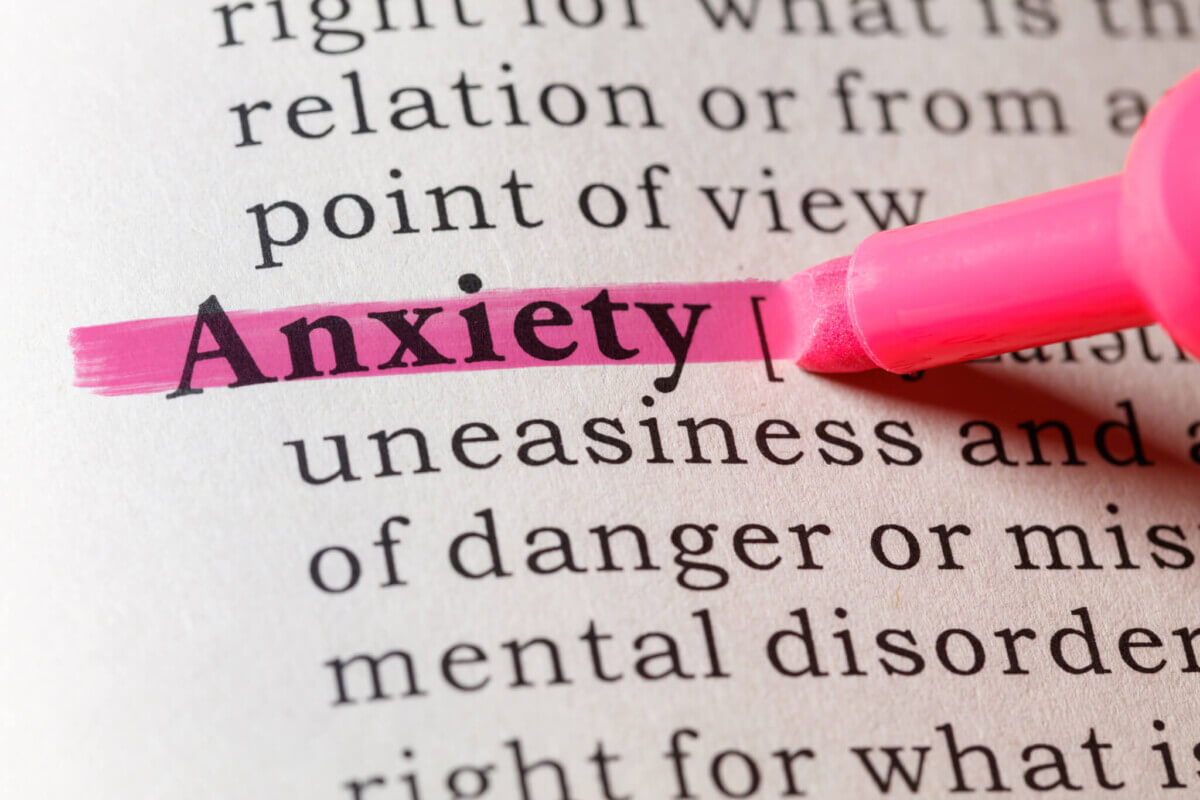
(© Feng Yu - stock.adobe.com)
DAVIS, Calif. — We've all experienced that gnawing feeling of dread while waiting for something unpleasant to happen, whether it's an important exam, a difficult conversation, or a medical test result. Now, a new study uncovers a key reason why anticipating a threat can be even more anxiety-inducing than the threat itself.
Researchers at the University of California-Davis report that it's not just the uncertainty of when a negative event will occur that causes anxiety, but how our perception of the threat's likelihood changes over time. Their study, published in the journal Computational Psychiatry, demonstrates that a statistical property called the “hazard rate” plays a crucial role in driving avoidance behavior and feelings of fear and anxiety during periods of uncertainty.
The hazard rate represents the probability that a threat will occur at any given moment, given that it hasn't happened yet. As time passes without the feared event taking place, the hazard rate can increase, even if the overall probability of the threat remains the same. This increasing hazard rate appears to fuel mounting anxiety and a stronger urge to avoid potentially threatening situations.
“If you know something is going to happen, as time goes on the hazard rate goes up because you know it didn’t happen earlier,” says study co-author Drew Fox, an associate professor of psychology at UC Davis, in a statement. “The hazard rate is always going to be higher if you don’t know when it is going to happen.”
The findings could help psychologists and mental health researchers better understand and treat anxiety disorders, which affect roughly 1 in 3 people during their lifetime. By identifying specific factors that contribute to anticipatory anxiety, the research opens new avenues for developing more targeted and effective interventions.
To investigate how uncertainty impacts anxiety, the researchers designed an experiment that manipulated the timing of threats while keeping the overall probability constant. Participants learned about two different threatening environments - one where shocks were more likely early on and another where they were more likely later.
Crucially, during the middle portion of each trial, the moment-to-moment probability of receiving a shock was identical between the two conditions. However, the hazard rate was higher in the “early threat” condition during this period. This clever design allowed the researchers to isolate the effects of the hazard rate from the overall threat probability.
The results were striking. Participants reported feeling more anxious and were far more likely to prematurely end trials to avoid shocks in the early threat condition - even during time periods when they intellectually knew the shock was less likely. This behavior led them to earn significantly less money in the early threat condition.
“At each experimental time point, the threat hazard rate mapped almost perfectly to our participants’ behavior, whereas the momentary threat probabilities had no predictive value whatsoever,” says Holley.
Paper Summary
Methodology
The study involved 42 participants who first underwent a learning phase to become familiar with the two threatening environments. In each 30-second trial, participants received unavoidable electric shocks delivered according to specific probability distributions. The “early threat” condition had a higher chance of shocks occurring in the first 10 seconds, while the “late threat” condition had a higher chance in the last 10 seconds. Importantly, the middle 10 seconds had an equal shock probability in both conditions.
After 50 trials in each condition, participants entered a testing phase. During this phase, they could choose to persist in the trial to earn money (1 cent per second) or end the trial early to avoid potential shocks. Participants also periodically rated their levels of fear and anxiety throughout both phases of the experiment.
The researchers used sophisticated statistical modeling and survival analysis techniques to examine participants' behavior and emotional responses across different conditions and time points.
Results Breakdown
The study's findings can be summarized in several key points:
- Avoidance behavior: Participants were significantly more likely to end trials prematurely in the early threat condition, even during time periods when the moment-to-moment shock probability was identical to the late threat condition. This led to participants earning 17.8% less money on average in the early threat condition.
- Self-reported anxiety: Participants consistently rated the early threat condition as more anxiety-provoking across multiple measures. This held true even when statistically accounting for the actual number of shocks received in each condition.
- Hazard rate predictions: The researchers found that the hazard rate was a significant predictor of self-reported anxiety levels, above and beyond the effects of overall threat probability.
- Learning of threat dynamics: Participants accurately learned and reported the general timing of threats in each condition. However, their avoidance behavior often contradicted this knowledge, highlighting the powerful influence of the hazard rate on emotional responses and decision-making.
- Forced-choice preference: When asked to choose which condition made them more anxious overall, 19 out of 21 participants selected the early threat condition.
Limitations
The researchers acknowledge several limitations to their study:
- Time frame: The study compared conditions separated by relatively short time periods. Longer-term studies may reveal additional effects.
- Laboratory setting: The artificial nature of the experiment may not fully capture real-world anxiety experiences.
- Sample demographics: The study was conducted with a sample of healthy adults. Results may differ in clinical populations or other age groups.
- Cultural context: The research was conducted in the United States, and findings may not generalize to all cultural contexts.
- Other statistical features: While the study focused on isolating the effects of the hazard rate, other related statistical properties of the threat distributions may have contributed to the observed effects.
Discussion and Takeaways
This study provides compelling evidence that the hazard rate - how our perception of threat likelihood changes over time - plays a crucial role in driving anxiety and avoidance behavior. This finding has several important implications:
- Reframing uncertainty: The results suggest that what we commonly refer to as “uncertainty” in threat contexts can be broken down into more specific components. Understanding these components may lead to more precise theories and treatments for anxiety disorders.
- Explaining maladaptive behavior: The study demonstrates how increasing hazard rates can lead people to engage in avoidance behavior that is ultimately harmful or irrational. This mirrors real-world situations where anxiety causes people to miss out on important opportunities.
- New targets for intervention: By identifying the hazard rate as a key driver of anxiety, the research opens up new possibilities for cognitive and behavioral therapies. Treatments could potentially focus on helping patients more accurately track and interpret changing threat probabilities over time.
- Broader applications: The concept of hazard rates influencing behavior and emotion may extend beyond threat contexts. Similar principles could apply to anticipation of positive events or decision-making in uncertain environments more generally.
- Computational approach: The study showcases the value of using computational modeling to break down complex psychological phenomena into more basic components. This approach could be applied to study other aspects of emotion and decision-making.
The researchers emphasize that their findings don't mean uncertainty is inherently bad or that all anticipatory anxiety is irrational. Rather, the study provides a more nuanced understanding of why waiting for potential threats can be so distressing. This knowledge could ultimately lead to better ways of managing anxiety in both clinical and everyday settings.
“Imagine a gazelle on the Serengeti,” says Holley. “As a matter of survival, it could keep its head down and graze a little longer, but the tradeoff is that it’s a bit more likely to be attacked by a lion. Something in its mind must be tracking the hazard rate and guiding its behavior accordingly.”
By shedding light on the scientific properties that shape our anxieties, we may find new ways to face life's challenges with greater resilience and equanimity.










